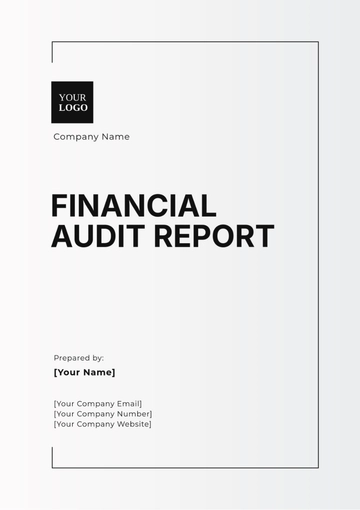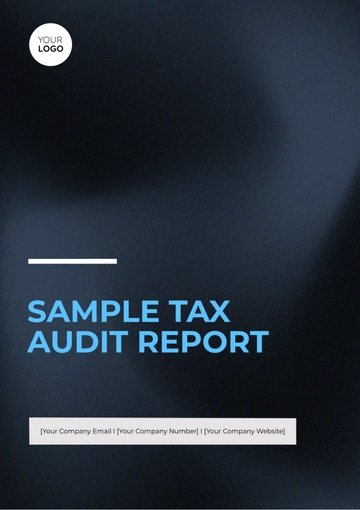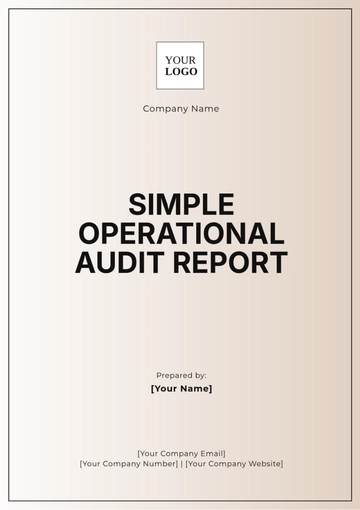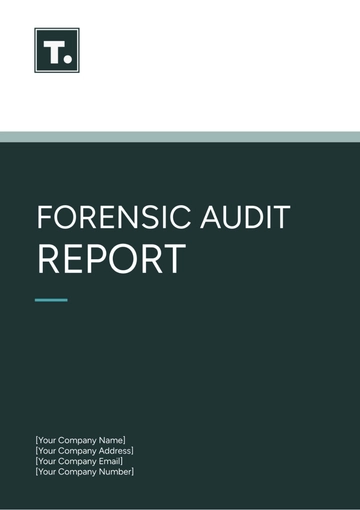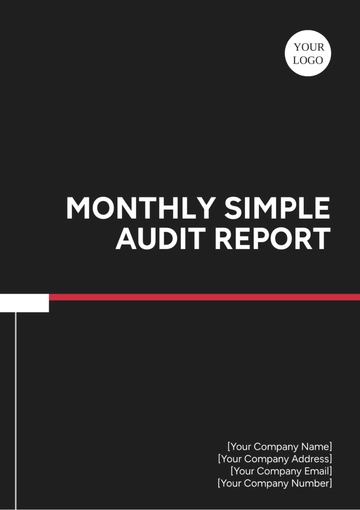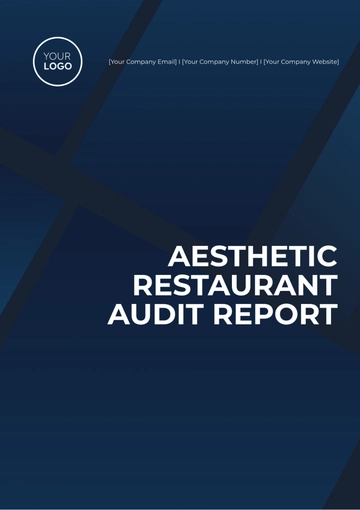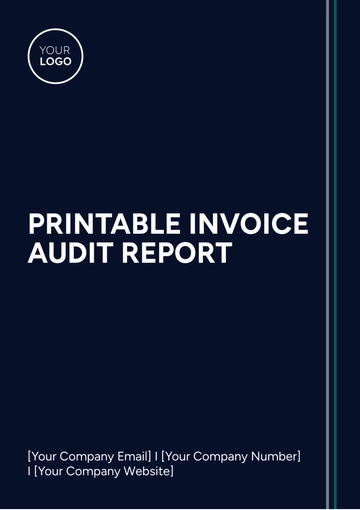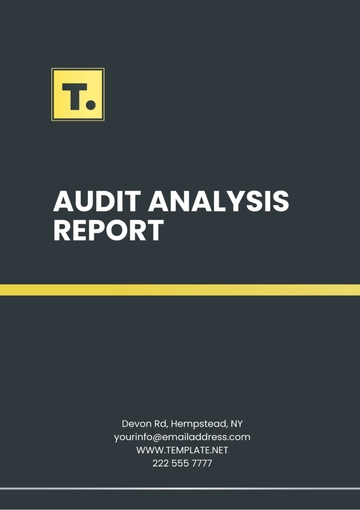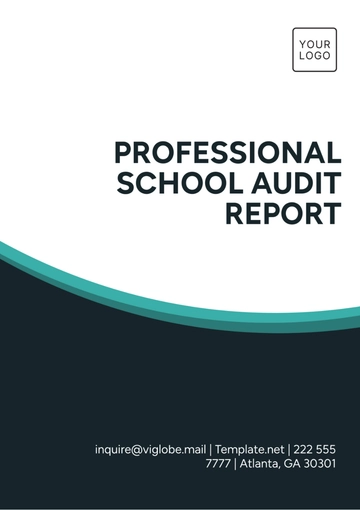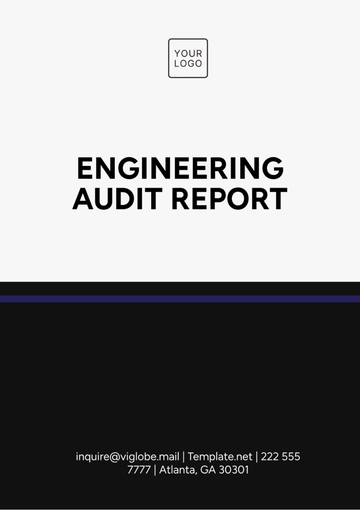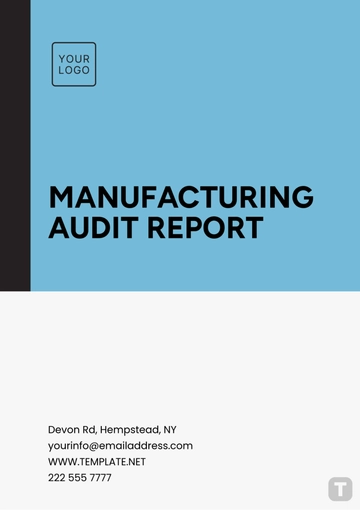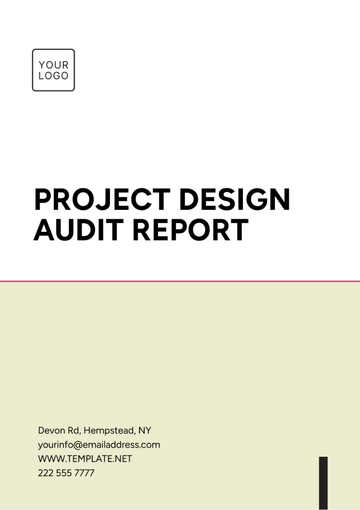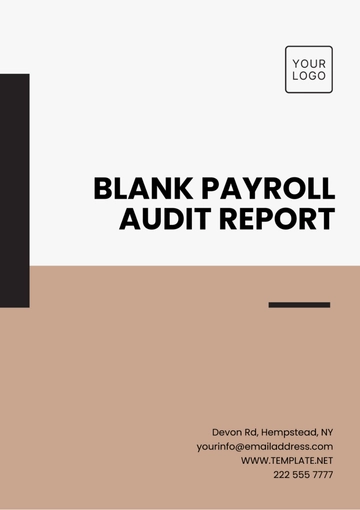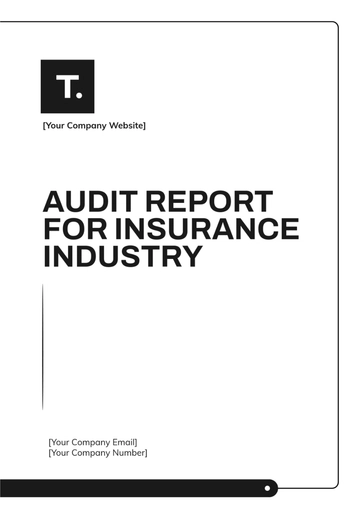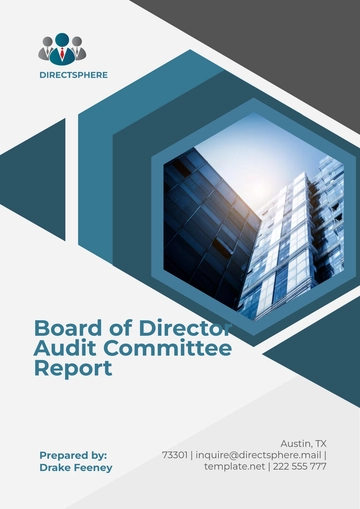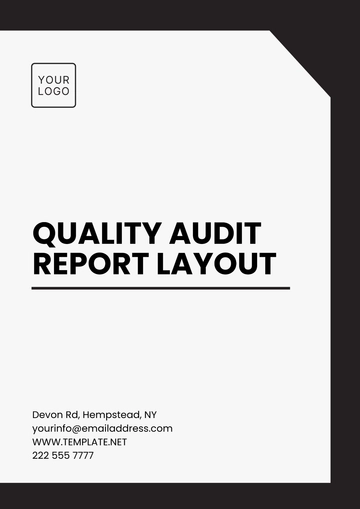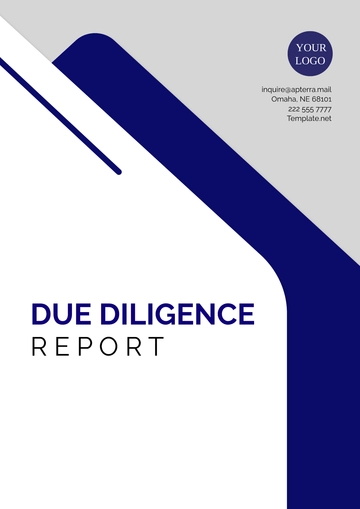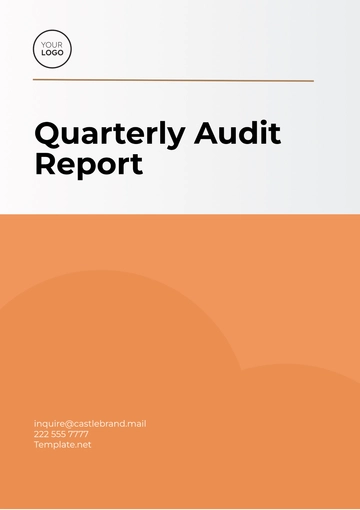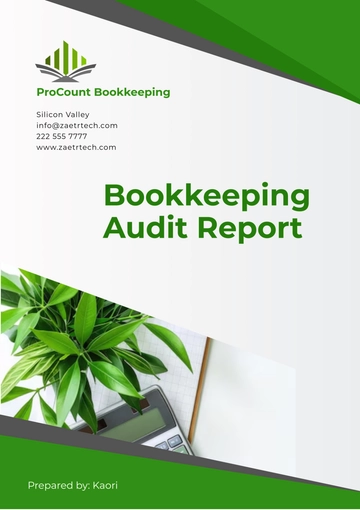Free Legal Intellectual Property Audit Report
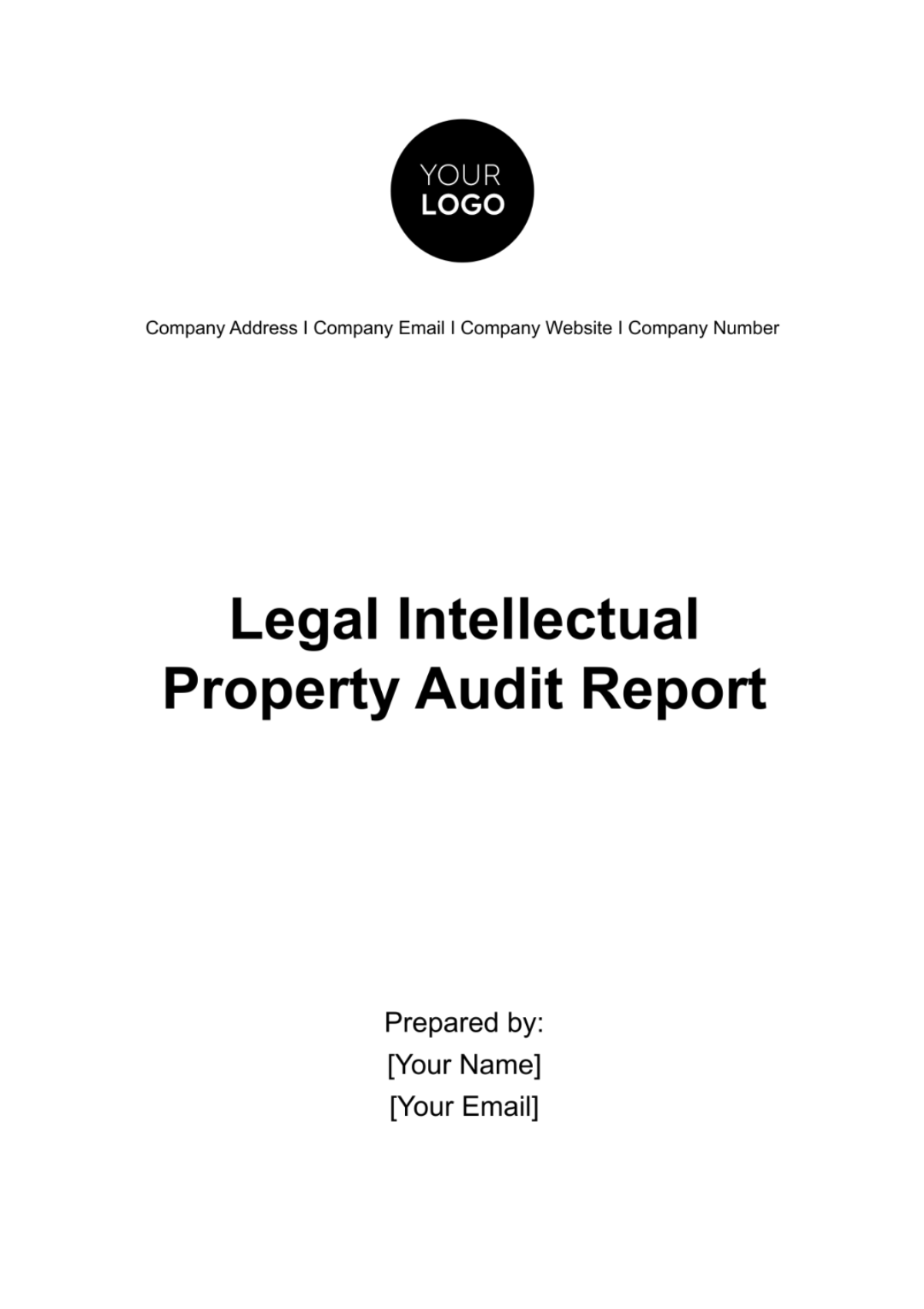
I. Introduction
This Legal Intellectual Property Audit Report has been prepared for [Your Company Name] with the aim of assessing the company's intellectual property assets from a legal perspective. Intellectual property (IP) is a valuable component of [Your Company Name]'s business, comprising patents, trademarks, copyrights, and trade secrets. The objective of this audit is to evaluate the ownership, validity, and protection of these IP assets to ensure compliance with relevant laws and regulations and to identify any potential risks or opportunities for improvement.
II. Inventory of Intellectual Property Assets
The following table provides an overview of the intellectual property assets held by [Your Company Name], categorized into patents, trademarks, copyrights, and trade secrets. Each category is further subdivided into specific assets, including their titles or descriptions, registration or grant numbers, dates of filing or registration, inventors, creators, or owners, current status, and relevant ownership documentation. This table serves as a concise reference for understanding the scope and status of [Your Company Name]'s intellectual property portfolio, highlighting key information essential for effective management and protection of these valuable assets.
Patents | Trademarks | Copyrights | Trade Secrets | |
|---|---|---|---|---|
Title/ Description | Ultimate Techwire Product | Logo | Cal Q Software Source Code | Manufacturing Process |
Registration/ Grant Number | US1234567 | TM789012 | SR456789 | - |
Date of Filing/ Registration/ Grant | 2022-05-15 | 2023-09-20 | 2021-11-30 | - |
Inventors/ Creators/ Owners | [Your Company Name] | [Your Company Name] | [Your Company Name] | [Your Company Name] |
Current Status | Granted | Registered | Registered | - |
Ownership Documentation | Patent Assignment Agreement | Trademark Assignment | Copyright Assignment | Confidentiality Agreements, Trade Secret Policies |
III. Ownership Verification
In this section, we undertake a thorough examination to verify the ownership of each intellectual property asset listed in the inventory. Ownership verification is essential to ensure that [Your Company Name] possesses legitimate rights to exploit, license, and enforce these assets. The verification process includes scrutinizing relevant documentation such as assignment agreements, inventor assignments, trademark assignments, and copyright assignments, as well as conducting searches in relevant databases and records.
Patents Ownership Verification:
Review of Patent Assignment Agreements: We have carefully reviewed the patent assignment agreements to confirm that [Your Company Name] holds the exclusive rights to the patented inventions. These agreements outline the transfer of ownership from inventors to [Your Company Name] and specify the scope of rights granted.
Examination of Inventor Assignments: Additionally, we have examined inventor assignments to verify that all inventors have properly assigned their rights to [Your Company Name]. This ensures that [Your Company Name] has clear title to the patented inventions.
Searches in Patent Databases: Searches were conducted in patent databases to verify the accuracy of ownership records and identify any potential discrepancies or conflicting claims. This comprehensive search process ensures that [Your Company Name]'s ownership of the patents is duly recorded and undisputed.
Trademarks Ownership Verification:
Analysis of Trademark Assignment Documents: Our team has analyzed the trademark assignment documents to ensure that [Your Company Name] is the rightful owner of the registered trademarks. These documents outline the transfer of ownership rights from previous owners to [Your Company Name].
Searches in Trademark Databases: Searches were performed in trademark databases to validate the accuracy of ownership information and ascertain the absence of any competing claims or encumbrances. This thorough search process confirms [Your Company Name]'s exclusive ownership of the registered trademarks.
Copyright Ownership Verification:
Examination of Copyright Assignment Agreements: We have meticulously analyzed the copyright assignment agreements to verify [Your Company Name]'s ownership of the copyrighted works. These agreements detail the transfer of copyright ownership from creators or authors to [Your Company Name].
Searches in Copyright Registration Databases: Additionally, searches were conducted in copyright registration databases to confirm the validity of registration and the accuracy of ownership details. This verification process ensures that [Your Company Name] is the rightful owner of the copyrighted works and that its rights are duly registered and protected.
Trade Secrets Ownership Verification:
Review of Confidentiality Agreements and Trade Secret Policies: While trade secrets are not subject to formal registration, we have reviewed confidentiality agreements and trade secret policies to ascertain [Your Company Name]'s rights to the confidential information. These documents outline the obligations of employees, contractors, and business partners regarding the protection of trade secrets.
Interviews with Key Personnel: Furthermore, interviews with key personnel and stakeholders have been conducted to validate [Your Company Name]'s proprietary interests in the trade secret assets. This ensures that all relevant parties are aware of and compliant with [Your Company Name]'s trade secret protection measures.
Compliance with Patent Laws:
Verification of Patent Applications: We have meticulously reviewed [Your Company Name]'s patent applications to ensure compliance with the requirements of the relevant patent laws. This includes verifying that the applications accurately disclose the inventions, meet the standards of novelty and non-obviousness, and comply with formalities such as payment of necessary fees and submission of required documentation.
Due Diligence in Patent Prosecution: Our team has conducted due diligence checks to verify the accuracy and completeness of [Your Company Name]'s responses to patent office actions, including examinations of prior art, patentability analyses, and arguments presented to patent examiners. This ensures that [Your Company Name] is effectively prosecuting its patent applications and maximizing the scope of protection for its inventions.
Trademark Registration Compliance:
Confirmation of Trademark Registrations: We have confirmed that [Your Company Name]'s trademarks are registered for the appropriate goods/services and that the specimens of use submitted to the trademark office comply with the requirements for registration. This includes ensuring that the trademarks are distinctive, non-generic, and capable of serving as indicators of source or origin in the marketplace.
Examination of Trademark Renewals: Our review extends to the status of trademark renewals to verify that [Your Company Name] is diligently maintaining its trademark registrations and complying with renewal deadlines and formalities. This proactive approach helps prevent the inadvertent abandonment of valuable trademark rights and ensures ongoing protection of [Your Company Name]'s brand assets.
Copyright Registration Compliance:
Eligibility of Copyright Works: We have examined [Your Company Name]'s copyright registrations to ensure that the works are eligible for copyright protection under applicable laws. This includes verifying that the works are original, creative expressions fixed in a tangible medium of expression, and that they meet the requisite standards of originality and authorship.
Proper Filing of Copyright Applications: Our assessment extends to the proper filing of copyright applications, including verifying that the registration applications were submitted with accurate information, supporting materials, and payment of required fees. This ensures that [Your Company Name]'s copyrights are duly registered and enjoy the full benefits of copyright protection under the law.
Trade Secret Protection Measures:
Evaluation of Protection Mechanisms: We have evaluated the measures implemented by [Your Company Name] to protect its trade secrets from unauthorized disclosure or use. This includes assessing the adequacy of confidentiality agreements, non-disclosure agreements (NDAs), and trade secret policies in safeguarding sensitive information.
Review of Access Controls: Our assessment encompasses a review of access controls, encryption protocols, and physical security measures employed by [Your Company Name] to restrict access to sensitive trade secret information. This ensures that only authorized personnel have access to confidential information and that appropriate safeguards are in place to prevent breaches or leaks.
IV. Risk Assessment
Based on our review, we have identified the following potential risks and liabilities related to [Your Company Name]'s intellectual property assets:
Infringement Risks:
[Your Company Name] faces the risk of infringement claims from third parties alleging that its products, services, or intellectual property assets infringe upon the rights of others. These claims could arise from unintentional infringement due to oversight or lack of awareness, as well as deliberate infringement by competitors seeking to exploit [Your Company Name]'s intellectual property assets. The consequences of infringement claims may include costly litigation, injunctions, damages, and reputational harm.
Validity Challenges:
[Your Company Name]'s patents, trademarks, and copyrights are susceptible to validity challenges, which may arise from competitors, patent trolls, or third-party stakeholders. Challenges to the validity of intellectual property rights could be based on grounds such as prior art, lack of novelty or inventive step, improper registration, or failure to meet statutory requirements. Invalidity challenges may lead to the cancellation, revocation, or limitation of [Your Company Name]'s intellectual property rights, thereby undermining its market exclusivity and competitive advantage.
Counterfeiting and Piracy:
[Your Company Name] faces the risk of counterfeiting and piracy, particularly in industries where counterfeit products or pirated content pose significant threats to revenue, brand reputation, and consumer safety. Counterfeit goods and pirated content not only erode [Your Company Name]'s market share and revenue streams but also tarnish its brand image, diminish consumer trust, and expose the company to potential legal actions for trademark infringement, copyright infringement, and unfair competition.
Data Breaches and Trade Secret Misappropriation:
[Your Company Name]'s trade secrets and confidential information are vulnerable to data breaches, cyberattacks, and insider threats, which may result in the unauthorized disclosure, theft, or misuse of valuable proprietary information. Data breaches and trade secret misappropriation pose serious risks to [Your Company Name]'s competitive advantage, innovation pipeline, and business operations, as well as legal and regulatory compliance obligations. Furthermore, breaches of confidentiality agreements or employee misconduct may lead to trade secret litigation, damages, and loss of proprietary assets.
International IP Risks:
Operating in global markets exposes [Your Company Name] to international intellectual property risks, including differences in legal frameworks, enforcement mechanisms, and cultural norms. International IP risks encompass challenges such as jurisdictional complexities, cross-border infringement, parallel importation, foreign regulatory requirements, and geopolitical tensions. Managing international IP risks requires comprehensive strategies tailored to specific jurisdictions, market conditions, and business objectives, as well as collaboration with local counsel, IP professionals, and industry stakeholders.
Emerging Technologies and Regulatory Changes:
[Your Company Name] operates in dynamic industries characterized by rapid technological advancements, disruptive innovations, and evolving regulatory landscapes. Emerging technologies such as artificial intelligence, blockchain, biotechnology, and quantum computing present novel IP challenges and opportunities, including issues related to patent eligibility, inventorship, ownership, and enforcement. Moreover, regulatory changes, policy shifts, and legal developments at the national and international levels may impact [Your Company Name]'s intellectual property rights, market access, and competitive positioning, necessitating proactive monitoring, adaptation, and compliance measures.
V. Recommendations
Based on the findings of the audit and the identified risks, we propose the following recommendations to enhance the management, protection, and strategic utilization of [Your Company Name]'s intellectual property assets:
Comprehensive Intellectual Property Strategy:
Develop and implement a comprehensive intellectual property strategy aligned with [Your Company Name]'s business objectives, industry dynamics, and competitive landscape. The strategy should encompass proactive measures for identifying, acquiring, protecting, enforcing, and monetizing intellectual property assets across patents, trademarks, copyrights, and trade secrets.
Risk-Based Portfolio Management:
Conduct a systematic assessment of [Your Company Name]'s intellectual property portfolio to prioritize resources, investments, and actions based on the risk profile, commercial value, and strategic importance of each asset. Adopt a risk-based approach to portfolio management that emphasizes the protection of core assets, mitigation of high-risk exposures, and optimization of asset utilization.
Continuous Monitoring and Surveillance:
Implement a robust monitoring and surveillance system to track developments in the intellectual property landscape, including new patents, trademarks, copyrights, and trade secrets filed by competitors, industry trends, regulatory changes, and emerging technologies. Leverage advanced analytics, AI-powered tools, and proprietary databases to proactively identify potential threats, opportunities, and competitive risks.
Enforcement and Litigation Strategy:
Develop a proactive enforcement and litigation strategy to defend [Your Company Name]'s intellectual property rights, deter infringement, and safeguard market exclusivity. Establish clear protocols and escalation procedures for addressing infringement allegations, cease-and-desist notices, and litigation threats, including the selection of appropriate legal remedies, forums, and jurisdictions for dispute resolution.
Collaboration and Partnerships:
Foster strategic collaborations, partnerships, and alliances with industry stakeholders, research institutions, technology providers, and legal experts to enhance [Your Company Name]'s intellectual property capabilities, expand its innovation ecosystem, and mitigate risks through shared resources, expertise, and best practices. Engage in cross-industry initiatives, standardization efforts, and industry consortia to address common challenges and promote collective innovation.
Employee Training and Awareness:
Provide comprehensive training and awareness programs to educate employees, contractors, and business partners about the importance of intellectual property protection, compliance requirements, and ethical considerations. Offer specialized training sessions on patent prosecution, trademark registration, copyright enforcement, and trade secret management to empower staff with the knowledge and skills needed to safeguard [Your Company Name]'s intellectual property assets.
Regular Audits and Reviews:
Conduct periodic audits and reviews of [Your Company Name]'s intellectual property practices, policies, and procedures to ensure ongoing compliance with legal, regulatory, and industry standards. Engage external auditors, IP consultants, or legal advisors to perform independent assessments, gap analyses, and benchmarking exercises to identify areas for improvement and optimization.
Investment in Innovation and Research:
Allocate resources and investments to support innovation, research, and development initiatives aimed at generating new intellectual property assets, enhancing existing products and services, and strengthening [Your Company Name]'s technological capabilities. Foster a culture of innovation, creativity, and entrepreneurship by incentivizing employees, rewarding inventive contributions, and fostering cross-functional collaboration.
VI. Conclusion
In conclusion, [Your Company Name] possesses valuable intellectual property assets that require diligent management and protection. By implementing the recommendations outlined in this report, [Your Company Name] can mitigate risks, ensure legal compliance, and maximize the value of its intellectual property portfolio. Continued vigilance and proactive measures are essential to safeguarding [Your Company Name]'s intellectual property rights in an increasingly competitive and complex business environment.
This concludes the Legal Intellectual Property Audit Report for [Your Company Name].
[Date of Report]
[Name of Auditor]
[Title]
[Auditor Contact Information]
- 100% Customizable, free editor
- Access 1 Million+ Templates, photo’s & graphics
- Download or share as a template
- Click and replace photos, graphics, text, backgrounds
- Resize, crop, AI write & more
- Access advanced editor
Assess your IP strategy with Template.net's customizable Legal Intellectual Property Audit Report Template. This editable template, accessible via our AI Editor Tool, streamlines audit reporting and empowers you to generate detailed reports on IP assets, facilitating informed decision-making and proactive measures to protect and maximize the value of your intellectual property rights.
You may also like
- Sales Report
- Daily Report
- Project Report
- Business Report
- Weekly Report
- Incident Report
- Annual Report
- Report Layout
- Report Design
- Progress Report
- Marketing Report
- Company Report
- Monthly Report
- Audit Report
- Status Report
- School Report
- Reports Hr
- Management Report
- Project Status Report
- Handover Report
- Health And Safety Report
- Restaurant Report
- Construction Report
- Research Report
- Evaluation Report
- Investigation Report
- Employee Report
- Advertising Report
- Weekly Status Report
- Project Management Report
- Finance Report
- Service Report
- Technical Report
- Meeting Report
- Quarterly Report
- Inspection Report
- Medical Report
- Test Report
- Summary Report
- Inventory Report
- Valuation Report
- Operations Report
- Payroll Report
- Training Report
- Job Report
- Case Report
- Performance Report
- Board Report
- Internal Audit Report
- Student Report
- Monthly Management Report
- Small Business Report
- Accident Report
- Call Center Report
- Activity Report
- IT and Software Report
- Internship Report
- Visit Report
- Product Report
- Book Report
- Property Report
- Recruitment Report
- University Report
- Event Report
- SEO Report
- Conference Report
- Narrative Report
- Nursing Home Report
- Preschool Report
- Call Report
- Customer Report
- Employee Incident Report
- Accomplishment Report
- Social Media Report
- Work From Home Report
- Security Report
- Damage Report
- Quality Report
- Internal Report
- Nurse Report
- Real Estate Report
- Hotel Report
- Equipment Report
- Credit Report
- Field Report
- Non Profit Report
- Maintenance Report
- News Report
- Survey Report
- Executive Report
- Law Firm Report
- Advertising Agency Report
- Interior Design Report
- Travel Agency Report
- Stock Report
- Salon Report
- Bug Report
- Workplace Report
- Action Report
- Investor Report
- Cleaning Services Report
- Consulting Report
- Freelancer Report
- Site Visit Report
- Trip Report
- Classroom Observation Report
- Vehicle Report
- Final Report
- Software Report

